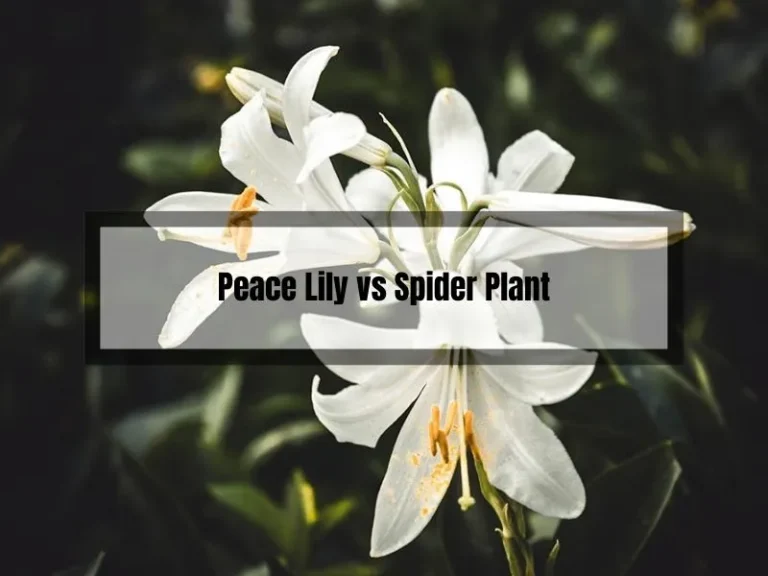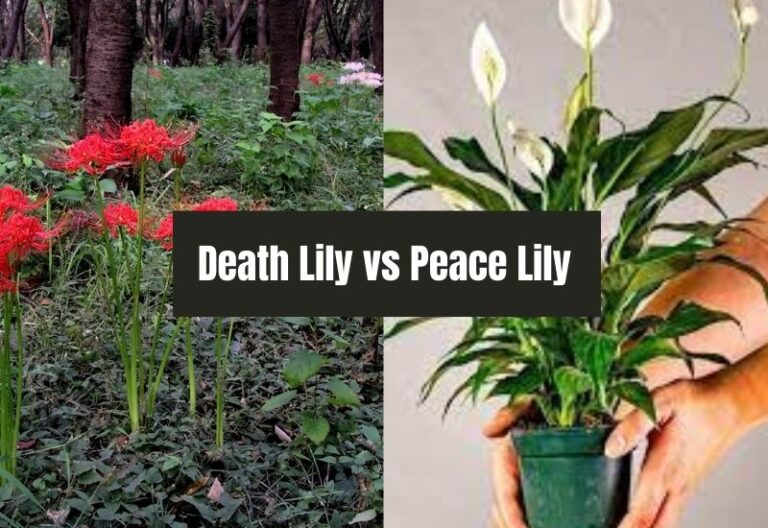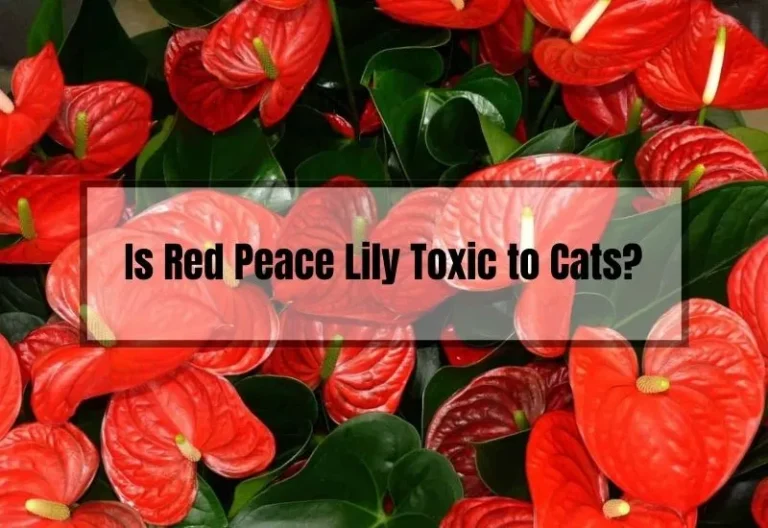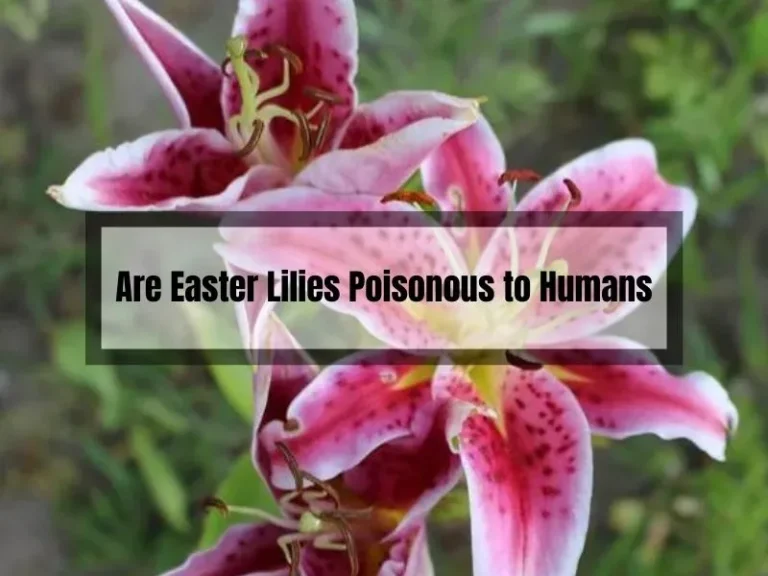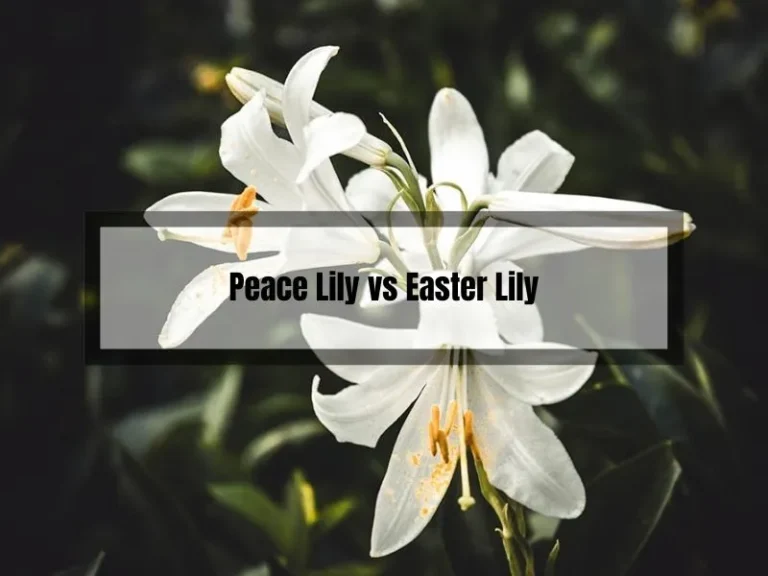Peace Lily vs Japanese Peace Lily: Which One is Right for You?
Peace lilies, also known as Spathiphyllum, are popular houseplants appreciated for their glossy green leaves and striking white flowers. In this article, we will explore the differences between Peace Lily and Japanese Peace Lily to help you choose the right one.
Understanding Peace Lily: Peace lilies are native to tropical regions of the Americas and Southeast Asia. They’re known for their air-purifying qualities and low-maintenance nature, making them ideal for novice gardeners and low-light conditions. Their elegant white flowers can enhance any room.
Exploring Japanese Peace Lily: Japanese Peace Lily, a variation of the Peace Lily (Spathiphyllum wallisii), features darker green leaves and smaller, delicate flowers. Like the traditional Peace Lily, it excels at air purification, making it a great choice for homes and offices. However, due to its smaller size, it may not make as bold a statement.
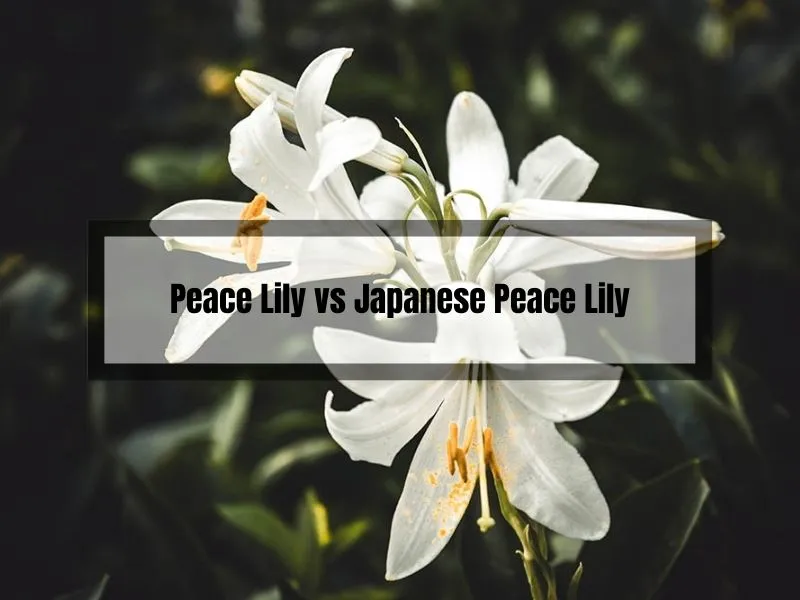
Peace Lily vs Japanese Peace Lily
Are you trying to decide between a Peace Lily and a Japanese Peace Lily? Both plants are beautiful and make great houseplants, but they do have some differences.
Appearance
The Peace Lily is known for its glossy green leaves and striking white flowers. On the other hand, the Japanese Peace Lily has darker green leaves and smaller, more delicate flowers.
If you’re looking for a plant with a more exotic look, the Japanese Peace Lily might be the better choice.
Size
When it comes to size, the Peace Lily is generally larger than the Japanese Peace Lily. If you’re looking for a plant that will make a statement in your home, the Peace Lily might be the better choice.
However, if you have limited space or prefer a smaller plant, the Japanese Peace Lily might be a better fit.
Care
Both plants are relatively easy to care for, but there are some differences in their needs. The Peace Lily prefers slightly more water than the Japanese Peace Lily, and it also likes to be kept in a slightly more humid environment. The Japanese Peace Lily, on the other hand, prefers slightly drier soil and can tolerate lower humidity levels.
When it comes to light, both plants prefer bright, indirect light. However, the Peace Lily can tolerate slightly lower light conditions than the Japanese Peace Lily.
I’ve had both a Peace Lily and a Japanese Peace Lily in my home, and I have to say, I love them both! The Peace Lily is a classic, and its striking white flowers always catch my eye. However, I also love the unique look of the Japanese Peace Lily, with its darker green leaves and delicate flowers.
In terms of care, I’ve found that both plants are relatively easy to care for. I do make sure to keep my Peace Lily in a slightly more humid environment, as it seems to prefer that. However, I haven’t had any trouble keeping my Japanese Peace Lily happy in slightly drier soil.
Overall, both the Peace Lily and the Japanese Peace Lily are great choices for houseplants. It really comes down to personal preference and the specific conditions in your home.
Understanding Peace Lily
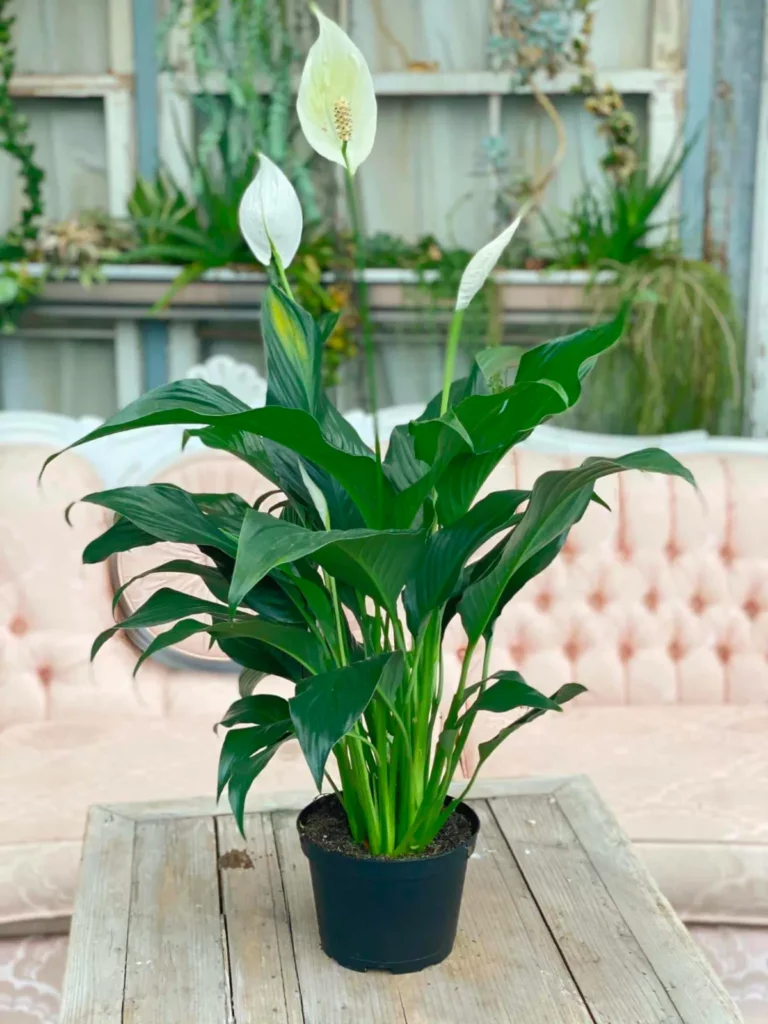
If you’re looking for an easy-to-care-for houseplant that can add a touch of elegance to your home, look no further than the Peace Lily.
With its glossy green leaves and striking white flowers, this tropical plant is a popular choice among indoor gardeners. In this section, we’ll explore the origins of the Peace Lily, its growing conditions, and how to care for it.
Origins of Peace Lily
The Peace Lily, also known by its scientific name Spathiphyllum, is native to the tropical rainforests of Central and South America. It was first discovered by Gustav Wallis, a German plant collector, in the late 1800s.
The plant was later introduced to Europe and the United States, where it quickly became a popular houseplant due to its ease of care and striking appearance.
Growing Conditions for Peace Lily
Peace Lilies are relatively easy to grow and care for, making them a great choice for beginner gardeners. Here are some key growing conditions to keep in mind:
- Light: Peace Lilies prefer bright, indirect light. Direct sunlight can scorch their leaves, so it’s best to place them near a window with filtered light.
- Temperature: Peace Lilies thrive in temperatures between 65 and 80 degrees Fahrenheit. Avoid placing them near cold drafts or air conditioning vents.
- Watering: Keep the soil moist, but not waterlogged. Water your Peace Lily once a week, or when the top inch of soil feels dry to the touch.
- Soil: Use a well-draining potting mix that is rich in organic matter.
- Fertilizer: Feed your Peace Lily once a month during the growing season with a balanced, water-soluble fertilizer.
Care and Maintenance of Peace Lily
To keep your Peace Lily healthy and thriving, there are a few key maintenance tasks you should perform:
- Pruning: Trim off any dead or yellowing leaves to keep your plant looking its best.
- Repotting: Repot your Peace Lily every 1-2 years to refresh the soil and give it room to grow.
- Pest control: Keep an eye out for common houseplant pests like spider mites and mealybugs. If you notice any signs of infestation, treat your plant with an insecticidal soap or neem oil.
- Propagation: You can propagate your Peace Lily by dividing the plant at the roots and repotting the new sections.
By following these simple tips, you can enjoy the beauty of a Peace Lily in your home for years to come.
Exploring Japanese Peace Lily

If you’re looking for a unique and striking houseplant, the Japanese Peace Lily is a great option. This variety of Peace Lily has darker green leaves and smaller, more delicate flowers than its more well-known counterpart.
In this section, we’ll explore the origins of the Japanese Peace Lily, as well as the growing conditions and care required to keep this plant healthy and thriving in your home.
Origins of Japanese Peace Lily
The Japanese Peace Lily, also known as Spathiphyllum ‘Mauna Loa’, is a hybrid variety of the more common Peace Lily. As its name suggests, this plant was first developed in Japan, where it quickly gained popularity for its unique appearance and ease of care.
Today, the Japanese Peace Lily is grown around the world and is a favorite among houseplant enthusiasts for its striking foliage and delicate blooms.
Growing Conditions for Japanese Peace Lily
Like all Peace Lilies, the Japanese variety prefers warm, humid environments and indirect sunlight. When choosing a spot for your plant, look for a location that receives bright, filtered light throughout the day. Avoid placing your Japanese Peace Lily in direct sunlight, as this can scorch the leaves and cause damage to the plant.
In terms of soil, the Japanese Peace Lily prefers a well-draining potting mix that is rich in organic matter. When potting your plant, be sure to choose a container with drainage holes to prevent water from pooling around the roots. Water your Japanese Peace Lily regularly, but be careful not to overwater – this can lead to root rot and other issues.
Care and Maintenance of Japanese Peace Lily
Caring for your Japanese Peace Lily is relatively simple, as this plant is fairly low-maintenance. In addition to providing the right growing conditions, you’ll need to keep an eye out for pests and diseases that can affect your plant.
Common issues include spider mites, mealybugs, and fungal infections, which can be treated with insecticidal soap or other natural remedies.
To keep your plant looking its best, you may also want to fertilize it regularly with a balanced, all-purpose plant food. This will help to promote healthy growth and vibrant foliage, as well as encourage your Japanese Peace Lily to bloom throughout the year.
Overall, the Japanese Peace Lily is a beautiful and unique houseplant that is sure to add a touch of elegance to any home. With the right growing conditions and care, this plant can thrive for years to come, providing you with a source of natural beauty and tranquility.
Comparative Analysis
Are you trying to decide between a Peace Lily and a Japanese Peace Lily? It can be tough to choose, but this comparative analysis will help you understand the differences between these two beautiful plants.
Appearance Comparison
The most noticeable difference between a Peace Lily and a Japanese Peace Lily is their appearance. The Peace Lily has glossy green leaves and striking white flowers, while the Japanese Peace Lily has darker green leaves and smaller, more delicate flowers. The Peace Lily can grow up to 3 feet tall, while the Japanese Peace Lily is usually smaller, growing up to 2 feet tall.
Another difference in appearance is the shape of the leaves. The Peace Lily has wider leaves that are more oval in shape, while the Japanese Peace Lily has narrower leaves that are more lance-shaped. The flowers of the Peace Lily are also larger and more showy than those of the Japanese Peace Lily.
Growth and Maintenance Comparison
When it comes to growth and maintenance, both Peace Lilies and Japanese Peace Lilies are relatively easy to care for. They both prefer bright, indirect light and moist soil. However, there are some differences in their growth habits.
The Peace Lily can grow quite large, up to 6 feet tall and 5 feet wide. It can also take on a clumping form, with multiple stems growing from the same base. The Japanese Peace Lily is usually smaller, growing up to 2 feet tall and 1 foot wide. It has a more upright growth habit, with a single stem growing from the base.
Health Benefits Comparison
Both Peace Lilies and Japanese Peace Lilies have some health benefits. They are both great air purifiers, removing toxins like formaldehyde and benzene from the air. They can also help to humidify the air, which can be beneficial for people with respiratory issues.
However, there are some differences in their specific health benefits. The Peace Lily has been shown to be effective in removing mold spores from the air, making it a great plant for people with allergies. The Japanese Peace Lily, on the other hand, has been shown to be effective in removing ammonia from the air, which can be beneficial for people with respiratory issues.
Which One Should You Choose?
Now that we’ve compared the Peace Lily and Japanese Peace Lily, it’s time to decide which one is best for you. Here are a few things to consider:
- Lighting: If you have bright, indirect light in your home, the Peace Lily may be the better choice. If you have lower light conditions, the Japanese Peace Lily may be the better option.
- Size: If you want a larger plant, the Peace Lily may be the better option as it can grow up to 3 feet tall. If you want a smaller plant, the Japanese Peace Lily may be the better option as it typically grows to be around 1-2 feet tall.
- Care: Both plants are relatively easy to care for, but the Peace Lily may require a bit more attention. It needs to be watered more frequently and prefers higher humidity levels.
Ultimately, it comes down to personal preference and the conditions in your home. If you want a larger plant and have bright, indirect light, the Peace Lily may be the better choice. If you have lower light conditions and want a smaller plant, the Japanese Peace Lily may be the better option.
Personally, I prefer the Peace Lily. I love the larger size and lush, green leaves. Plus, I find the white flowers to be stunning. However, I do find that it requires a bit more attention than the Japanese Peace Lily. I’ve had to adjust my watering schedule and mist it more frequently to keep it healthy.
Ultimately, it’s up to you to decide which plant is best for your home and lifestyle. I hope this comparison has helped you make an informed decision!
Conclusion
After comparing the features of the Peace Lily and the Japanese Peace Lily, it is clear that both plants have their own unique characteristics that make them a great addition to any indoor garden.
The Peace Lily is known for its air purifying abilities, ease of care, and beautiful white flowers. On the other hand, the Japanese Peace Lily has a more exotic appearance with its variegated leaves and pink flowers.
When it comes to choosing between the two, it ultimately depends on personal preference and the specific needs of your indoor space. If you are looking for a plant that is easy to care for and will purify the air in your home or office, the Peace Lily is a great choice. However, if you want a plant that is more unique in appearance and will add a pop of color to your space, the Japanese Peace Lily is the way to go.
Regardless of which plant you choose, both the Peace Lily and the Japanese Peace Lily are great options for those looking to add some greenery to their indoor space. With proper care and attention, these plants can thrive and bring a sense of peace and tranquility to any room.


